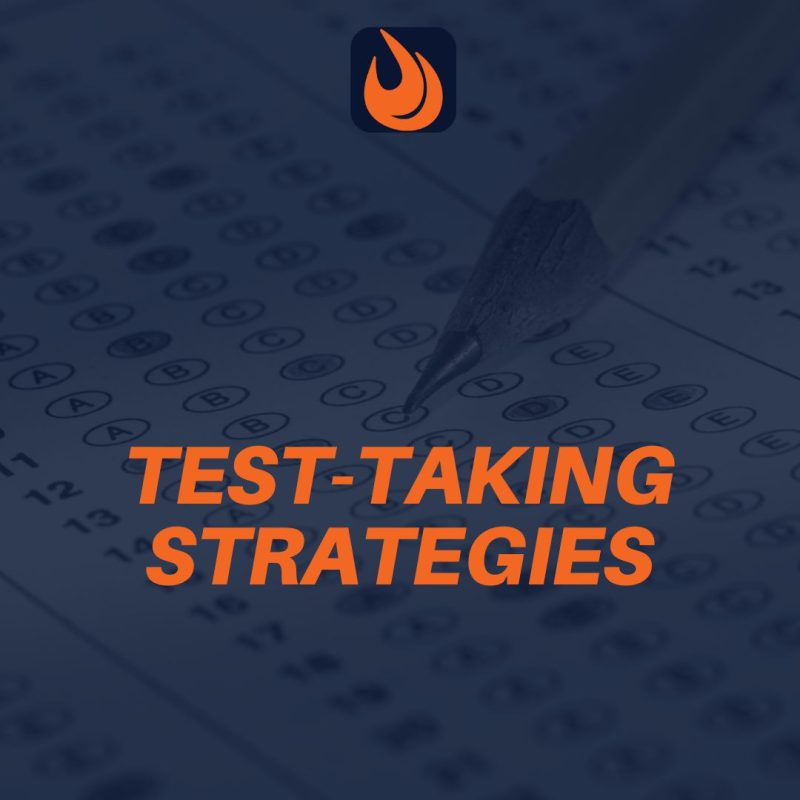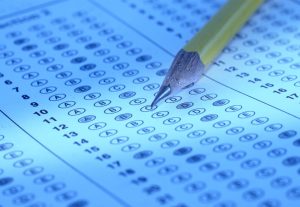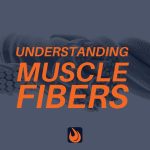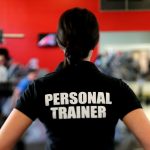
When preparing for any personal trainer certification exam, it’s important to bear in mind that there’s both an art and science to test-taking – especially multiple-choice test-taking. I have taken several certification exams during my 20-year career, and I learned something new with each experience. The following personal trainer certification test-taking strategies are what I have gleaned over the course of my career.
Two overarching points are paramount in my mind.
First, no, the exams do not get easier – they are designed to be tough (and they need to be to ensure competence in the field). Second, test anxiety is normal for many folks and should not quell confidence in your knowledge and preparation.
How to Study for Your Personal Trainer Certification Exam
NFPT provides you with the Personal Trainer Manual, which we want you to read and then go back to as a reference. While you don’t have to read it (because exercise science knowledge is accessible from any number of sources) to pass the NFPT exam, we work hard to construct a manual that presents the info to you in a format and in language that makes it an ideal prep tool for the exam.
However, solidifying your understanding of the NFPT education manual can be done by using various textbooks or resources. Texts like, NSCA’s Essentials for Personal Training, ACSM’s Foundations of Strength and Conditioning, ACSM’s Guidelines for Exercise Testing and Prescription, and Human Anatomy and Physiology by Marieb and Hoehn* – these and books like them can be of huge help to reaffirming your knowledge. It’s not necessary to read these, but IMO, the more the better (and the more you know, the better trainer you will be too)!
We also provide the Exam Content Outline (the full outline is provided with certification enrollment), which is a checklist of subjects that you’re going to find on the test – use this. Go through it, one section at a time (there are 5 sections), and check things off as you feel that you’re comfortable with them.
The more productively you study, the less wasted time you’ll put in. There is a mantra for info retention that works well for most people: ‘you have to read it, write it, and speak it in order to retain it’. Read it first, then chunk it out and write it down, then try and teach it to someone else. Because of the natura of personal training information, adding a 4th step will solidfy your mastery: perform it.
1. READ IT. Read your text (the NFPT manual and/or other books and manuals) all the way through (this doesn’t mean you have to memorize everything you read), then use your checklist and read the text that is specific to that section.
2. WRITE IT. Make flashcards and/or take notes. You can use someone else’s flashcards that already exist on the web, Writing your own flashcards will work better for retention purposes than using someone else’s. To write it down is like a stamp to the brain (some stamps may wash off a little easier than others, so stamp it many times if you have to). It will take longer, and you may get writer’s cramp, but it’ll be worth it come test day.
3. SPEAK IT. Talk about what you’re reading, or your flashcards ,or your notes with someone else. You can talk about it with your dog, but another human can ask you questions and engage with you about the topics, which will help even more for retention.
Consider using mnemonic devices in an attempt to better stamp the info on the brain. Any silly song, poem, or ridiculous phrase that connects two things together will help you tremendously. Remember ‘ROY G. BIV’ for the colors of the rainbow? This is just a silly acronym that looks like a first, middle, and last name, but it helps kids learn the sequenced colors of the rainbow. For you, it may be that ‘distal’ sounds like ‘distant’ or that motor unit recruitment starts slow to fast (and reds stick together). Whatever clever way you may think through some of the terminologies, it will help come test time.
4. PERFORM IT. This doesn’t work as well when you’re studying for a history test, but it will work wonders for studying anatomy, physiology, biomechanics and exercise programming. When you work out, think about what muscles and joints you’re working and feel the muscles that are involved in the work. Think through what you’re doing and why. Shadow a trainer, teach and assess a friend just like you would a potential client, get your hands in it because it’s a hands-on job. Make your time at the gym count for more than your workout, it can be study time too!
The More You Know…the Less You Freak Out??
Do your research and take it seriously. No, you don’t need to memorize all the fine print, formulas, and charts, and tables in order to do well on your personal trainer certification test… the memorization of these things won’t necessarily assess your ability as a trainer (we’re not looking to assess your memorization skills). So, don’t memorize the Hume formula for calculating lean body weight (LBW), for example. But, do understand why it’s important to know the LBW of your clients and how and why your goal-oriented training program can positively affect LBW.
Second, it’s okay to freak out a little, just not so much that you spark clinical anxiety. Usually, the people who care enough to be freaking out a little are the people who do far better than the average.
7 Personal Trainer Certification Test-Taking Success Tips
Go into it prepared. As the previous section underscored, exam preparation is the greatest predictor of success. We have all encountered people who doubt themselves and their knowledge, but then there are those who are so confident that they know it all, they don’t bother to read the material or prepare adequately. Despite what some apparently think, the information required to become a competent and skilled personal trainer is much more than knowing which exercises work which muscles. Exam topics range from physiology to business ethics. Read the manual, take the practice tests, and always feel free to reach out and ask questions if something doesn’t sit quite right with you.
Read the entire question. Then, read it again. So often, the mistakes people make on tests are due to reading the question too fast, believing they know the answer, and then not re-reading it before selecting a response. This happens for a couple of reasons. One, certification exams are timed, and we are eager to “get through it”. Second, nerves are at the forefront. Slow down. Read the entire question thoroughly. Then, read it again. If it doesn’t make sense at the time, move on to the next question and revisit the skipped question at a later point in your exam.
Read every answer option slowly and carefully. Generally, there are two answers that are just blatantly wrong and a distractor that may appear correct on the surface. There will only ever be one right answer or “best” answer. So, read every possible response and select the best fit. Eliminate the wrong answers immediately and you narrow your chances down to 50/50.
Avoid overthinking or arguing with responses. This is one I’m famous for doing – overthinking. I find myself arguing with the question and thinking, “Well, B could be correct if…” or “D would be right if…”. Don’t place conditions in the question that are not there in black and white. Read the question for the context it presents and nothing more. Don’t “if” yourself into a corner and then overthink the answer.

Answer questions you are sure of first. Flag the rest. Since tests are timed, I found it helpful to move on to questions if I did not feel confident in selecting an answer in that moment. I flag those I’m unsure of and circle back after answering those that were the easiest. This saves time and struggle.
When in complete doubt, guess. If you fail to answer any question simply because you did not know the right answer, you will get it wrong 100% of the time. If you make a guess, at worst, you have a 25% chance of getting it correct if not a 50% chance. Those are better odds. Make your best-educated guess and move on.
Try to determine the answer before reading the options. This is where people take a tumble. Reading the responses first and trying to match it to the question before reading the question through once or twice. Avoid focusing on the four answer choices and just read the question for context and information. In your mind, think about what the right answer might be. Then, read the answers presented and make your selection.
Following the above personal trainer certification test-taking tips doesn’t guarantee you will get a passing score, but they are strategies to employ that will improve your chances of answering correctly. Set aside at least an hour a day to study and review concepts that are the toughest to absorb (usually the deep nerdy science concepts). Finally, take advantage of the practice tests as often as you can.
*affiliate link







